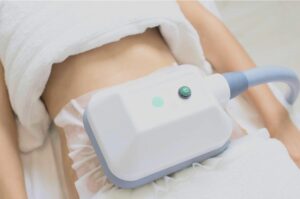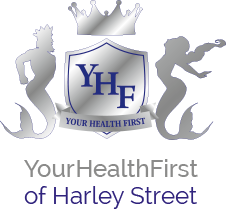Cryolipolysis is a fat reduction process that utilizes low temperature to remove fat deposits in particular body parts. This procedure is generally referred to as fat freezing. The operation is intended to eliminate localized fat deposits or bulges that cannot be reduced with changes in diet and exercise alone.
Cryolipolysis is not a therapy for losing weight in and of itself. The treatment will destroy localized fat cells, but you should not anticipate shedding a significant amount of weight.
If you have 10 pounds of fat stored in your stomach and the treatment successfully eliminates 26% of the fat cells in the treatment region, you may anticipate losing around 2.6 pounds after only one session.
Side Effects
In the early aftermath of cryolipolysis, what side effects might a patient anticipate? Possible short-term adverse effects on the regions that are treated include the following:
- Ache or discomfort
- Redness
- Swelling
- Discoloration of the skin or bruises may
- A tingling or numbing sensation on the skin
After treatment, you may still be experiencing some of the side effects for anywhere from a few days to a few weeks. To alleviate pain or any other kind of discomfort, your physician could suggest that you take an analgesic drug.
Cryolipolysis is generally considered a safe therapy; yet, it may cause specific adverse effects, including edema, bruising, erythema, and acute neuralgia; however, these side effects usually go away on their own within two weeks after treatment.
Only three of the approximately 500 patients treated with cryolipolysis reported experiencing mild to severe pain or neuralgia, and no significant side effects were noted in the study by Stevens et al. 2,7.
Although cryolipolysis has a low frequency of significant adverse side effects, 33 paradoxical adipose hyperplasias were reported to devise makers out of around 650,000 cryolipolysis treatments.
Who Makes a Good Candidate?

Cryolipolysis seems to be a therapy for fat removal that is both safe and effective, and it doesn’t need the recovery time that liposuction or surgery does. Keep in mind that the goal of cryolipolysis is not a weighted reduction but rather a fat removal. The ideal applicant is already very near to their target body weight, but they have patches of fat that are pinchable and resistant, making it tough to get rid of them with only diet and exercise alone.
Because it does not target visceral fat, cryolipolysis will not result in an improvement in your general health. The patient evaluation should always begin with a detailed medical history and continue with a complete physical examination. The patient’s rheumatologic history, surgical history, and the medications they are currently taking should all be included in the medical record.
Because vacuum suctioning has the potential to incarcerate a hernia, the patient’s physical examination needs to make sure that areas of focal adiposity can be easily lifted from the underlying musculature. The study also needs to check for hernias while the patient is recumbent and while they are performing a Valsalva maneuver. This period is an excellent chance to discuss the cryolipolysis procedure, which may take several sessions to bring about a steady decrease in fat.
Cryolipolysis, as opposed to liposuction, results in a modest and gradual reduction in subcutaneous fat. Multiple therapy cycles and sessions may be necessary for a patient to achieve their objectives, depending on the treatment area, individual characteristics, and patient goals. Liposuction, on the other hand, produces a dramatic and immediate reduction in subcutaneous fat.
Patients who need extensive debulking or want results immediately after treatment are better candidates for liposuction, according to the study’s authors, since liposuction is preferred over cryolipolysis. When the treatment plan calls for the transfer of fat to enhance other parts of the body, such as the buttocks, the face, or the breast, liposuction is often the procedure of choice.
Patients who are not obese and are looking for contouring or a slight decrease in fat pockets are ideal candidates for cryolipolysis. This is in contrast to patients who are looking for considerable debulking. However, suppose the fat layer is not adequate. If this is the case, cryolipolysis should not be considered a treatment option since it may have an undesirable effect on the placement of the vacuum applicator in the treatment area. Instead, a different treatment option should be investigated.
Expectations after your first treatment
After you have had some time to relax in a plush chair, we will apply a gel pad and the CoolSculpting applicator to the specific region of fat that needs to be reduced. You most likely believe that you will feel the cold, and you are correct in this assumption; nevertheless, you will only feel the acute cold for the first five to ten minutes, after which the region will go numb.
At the beginning of the treatment, you may also experience some pulling or tugging owing to the suction and any pain or cramping in the area being treated. When you become numb, you will no longer feel these feelings either. While your fat cells are frozen, you are free to do things like reading, checking your email, or even sleeping throughout the procedure.
It might take anywhere from 35 to 60 minutes for a single session, depending on the extent of the region that has to be treated. After your treatment is complete, we will give the area a light massage for a few minutes, which will often result in a tingling feeling. After that, you can depart and resume your previous activities without further interference.
No downtime is needed for recovery. In the days immediately after the surgery, some patients have transient redness, swelling, bruising, or discomfort in the treated region. However, these adverse effects should disappear once a few days have passed.
Conclusion
Cryolipolysis is a potential nonsurgical fat-reduction and body-contouring therapy, despite scant proof. Cryolipolysis is best for people who want nonsurgical spot reduction of moderately large adipose tissue. Cryolipolysis attracts men and women to cosmetic surgical practices.
Although the exact mechanism of cryolipolysis is unknown, the method seems efficient, safe, and has few adverse effects. Post Treatment massage may boost cryolipolysis’s effectiveness. Multiple treatments in the exact anatomic location may lead to more significant fat loss, although cryolipolysis’s point seems to diminish with each session.










